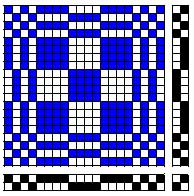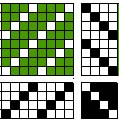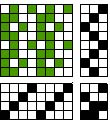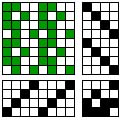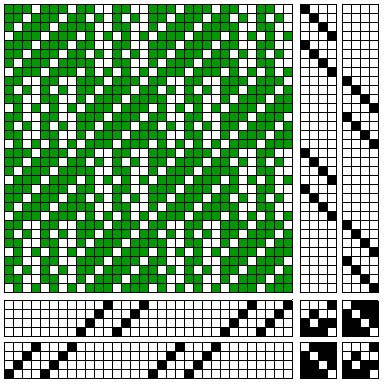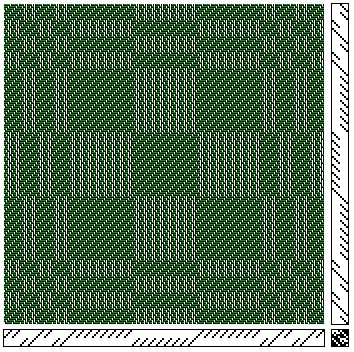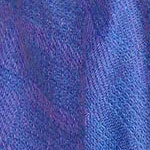More about profile patterns
But you don't have to be traditional...In "About profile patterns" I wrote that we can consider every square in the profile draft as a "shorthand" represtentaion of something else - something that is not pre-determined: a number of ends woven in a specific way.
A profile pattern can be seen as a wish: we want to make a fabric with a pattern like this. At the moment we don't know how, but the goal is that it be patterned like this.
Usually, the pattern appears through the use of different structures for the different pattern areas.
So: we need to identify the repeat of the structure(s) we wish to use - and to make them work together. This sometimes means that we need more shafts and treadles than we would guess to begin with.
Let us again look at a simple checkerboard pattern:

